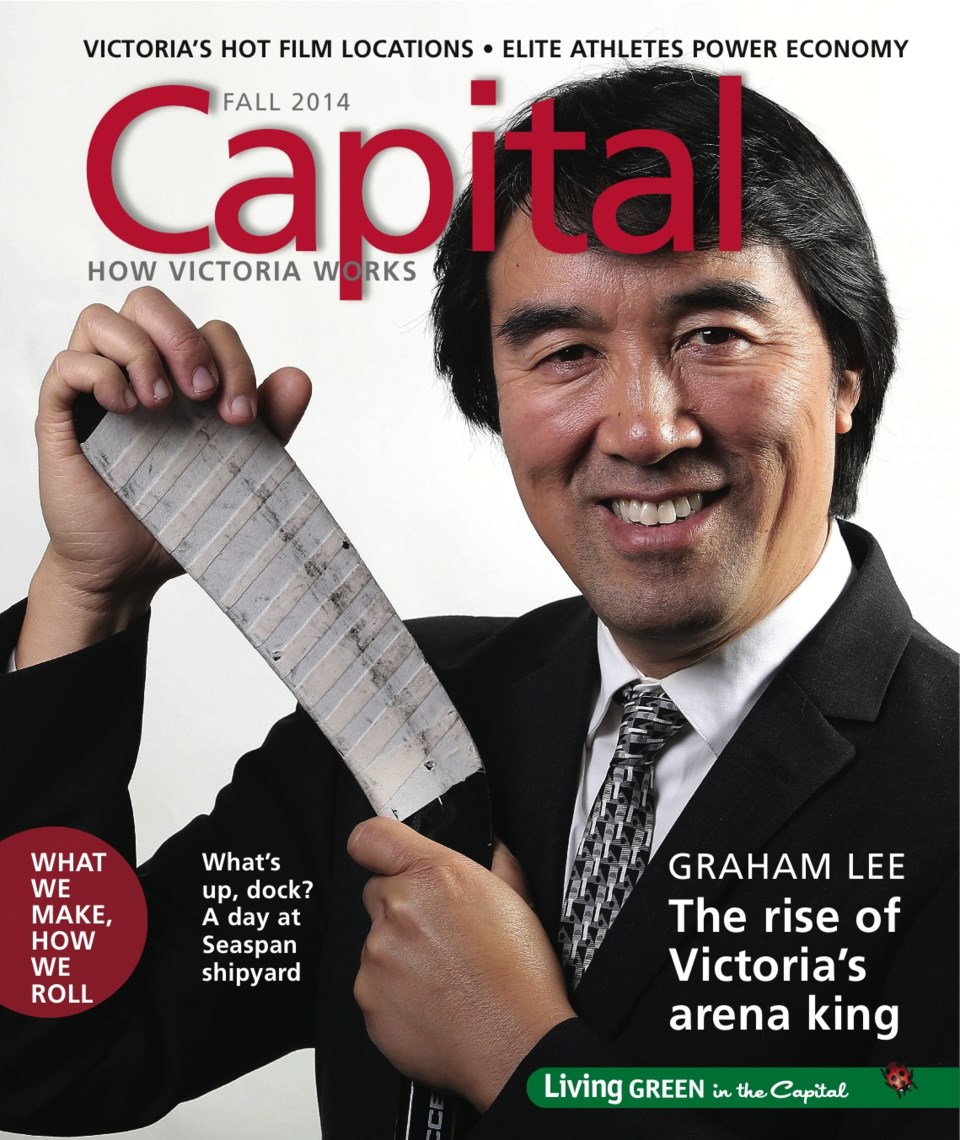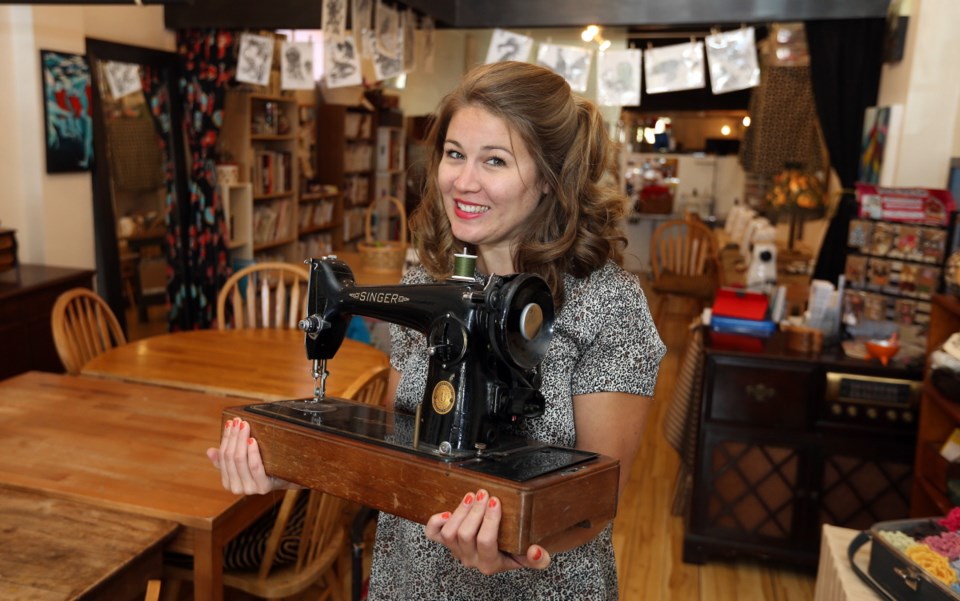Jenny Ambrose has always known that behind every great fashion trend is someone with a sewing machine.
Now Ambrose, owner of The Makehouse in Victoria, is hoping to put women and men not just on the forefront of the fashion trend, but in the driver’s seat on the road to creating their own wardrobe.
The Makehouse is a retail operation on Fort Street where customers pay to attend workshops or take courses based on sewing. Workshops range from beginner to refresher sessions, from working with patterns to creating patterns of your own.
Courses for kids are also an option and even birthday parties can be arranged. People can also drop in at certain times to use the high-end digital sewing machines.
“I want to teach people not just the practical side of sewing, but the creative aspects as well,” Ambrose said.
 |
|
Click on the cover to read the fall 2014 issue of Capital magazine online |
“People don’t need to go to fashion school to be able to have sewing as part of their lives, to be able to do things for themselves.”
Sewing your own clothes can lead to bigger things. For proof, consider Eliza Faulkner, who owns her own label. She says it all began at age 12 in the Cowichan Valley, when she sewed clothes for herself.
Faulkner went on to fashion school in London, England, and did design work for several labels in the city.
She now works in a studio in Duncan while an agent beats the worldwide bushes on her behalf. “[Sewing] was a great place to start,” said Faulkner. “And it’s fun to say you’ve made it yourself and, at the same time, you know nobody else can have it.”
Ambrose, 36, has been in Victoria since 2011. She was born in Saskatoon.
Her father taught industrial arts at a public school and was handy enough to build the family home.
Her mother, too, was not afraid to do things for herself or the family, including some sewing, although it was not an avocation.
But Ambrose moved to England in 1998 and found inspiration. In Brighton, she founded and managed her own line of women’s wear under the Enamore label. The line lasted six years. She later taught fashion students about sewing and clothing construction in Bath.
When she opened her first Victoria storefront sewing shop, many people told her she was nuts. But she has since moved to an area with more traffic and has a steady stream of clients and customers, including repeats.
She recently invested in new digital sewing machines. These have the added benefit of operating with or without a foot pedal, making them accessible to people in wheelchairs.
For Ambrose, much of her inspiration comes from what’s been dubbed the “slow-fashion movement.” It’s about returning to well-made clothes. Preferably, they are made in a business close to home.
Maybe they are even made by somebody in your family.
Ambrose said she often uses off-the-rack garments to show her clients things such as stitches placed far apart that take less thread and keep costs down. She said such cost-cutting moves affect the quality of clothing today.
“Only the rich can afford to buy cheap things because they will wear out and they will have to keep buying new things,” said Ambrose. “If things are well made, you will invest the time into repairing them because they are worth it.”
High-end fashion designers and outlets, such as Vogue, publish and sell printed patterns for people to use to sew their own on-trend clothing. Done well, these look fantastic.
“Just because something is homemade doesn’t mean it has to look homemade,” Ambrose said.
And it’s not just about high fashion. Ambrose said she had one customer, a carpenter, who came in with four pairs of heavily used Carhartt overalls (which can retail for more than $100) and his new sewing machine, a Christmas gift.
“He left knowing how to use his sewing machine and how to put heavy-duty patches on his Carhartts,” she said. “That’s all he wanted to know and I haven’t seen him since.”
She also gets women who are interested in sewing basic clothing items such as leggings. Underwear is another favourite.
“Women will always complain they can’t find something that is pretty but still sensible in underwear,” Ambrose said.
“They just don’t make underwear for a woman who has any kind of a butt,” she said. “If you have any kind of booty, everything on you will be a thong.”
Ambrose said any comments about sewing and modern clothes would be incomplete without a reference to the working conditions in developing-world garment factories, such as the factory in Bangladesh that collapsed last year, killing 1,129 people.
“You feel all great because you got a T-shirt for $5, but there is another price to pay,” she said.
“[The Makehouse] is my way of fighting against that,” said Ambrose. “This is my soapbox.”
Ultimately, she hopes to help revive something that has been lost. In recent decades, with both parents working, it has become a rarity to pass on a skill such as sewing to the younger generation.
It was once common for houses to have a sewing room. Most families had at least one member who was good at it. Now, people can be flummoxed by the idea of sewing on a button.
But Ambrose is convinced slow fashion, clothes-making and sewing will be a good fit with Victoria.
“People in Victoria like to be unique,” she said. “They like to express themselves through their lifestyle and clothing is a part of that. So, if people can learn how to alter things or make things for themselves, then they can express themselves any way they want.”
